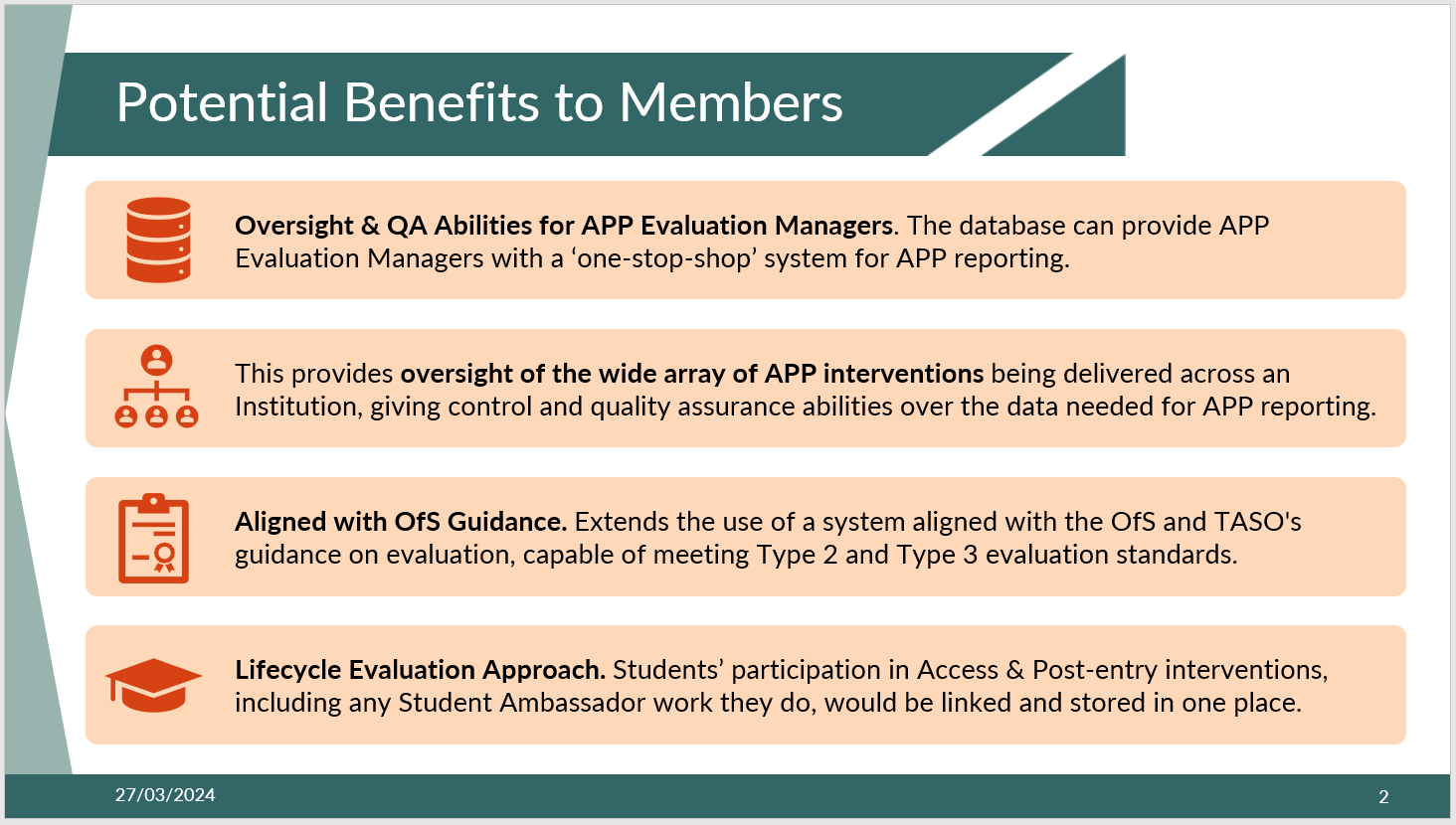Here at the HEAT Service we have been thinking about our tools and resources in relation to the new Access and Participation Plans (APPs) that will run from 2024/25. In response to discussions with members about the new APPs and the Equality of Opportunity Risk Register (EORR), we are now exploring how we can support members in using HEAT to record and evaluate the post-entry interventions they will be reporting in their new APP, as well as continuing to support members in recording and evaluating their access interventions.
We already know, from speaking to members, that they are now looking to systematise the recording and evaluation of interventions across the whole student lifecycle. This is often being driven by ‘APP Evaluation Managers’, some of whom are relatively recently appointed. We believe that the existing HEAT system already has many features that can support those managers looking for solutions to managing a cross-institution and whole student lifecycle APP (Figure 1).

Figure 1: Potential benefits of using the HEAT database for APP recording and evaluating across departments and the student life cycle
Some APP Evaluation Managers, or equivalent, are already considering making the case within their institution that HEAT should be a one-stop shop for standardising their APP recording and evaluating. They are finding that they need to plan and report on an APP written and delivered across multiple departments, that may all be using different systems and tools for recording, monitoring and evaluating both access and post-entry interventions. Using one system such as HEAT would provide APP managers with the oversight and quality assurance to report across their plan.
We will be working with a number of individual members as they discuss with HEAT a ‘vision’ of how they would want to use the existing HEAT Service for recording their post-entry work, and then sharing what we learn with the whole membership. We hope to identify what additional extras members might need, helping us to develop tools and resources specific to the post-entry area of work. We hope that highlighting individual member’s experiences will support and inform the whole membership.
If you would like to discuss using the HEAT system to record your institution’s post-entry interventions, please email anna.anthony@heat.ac.uk or rachael.edgar@heat.ac.uk


